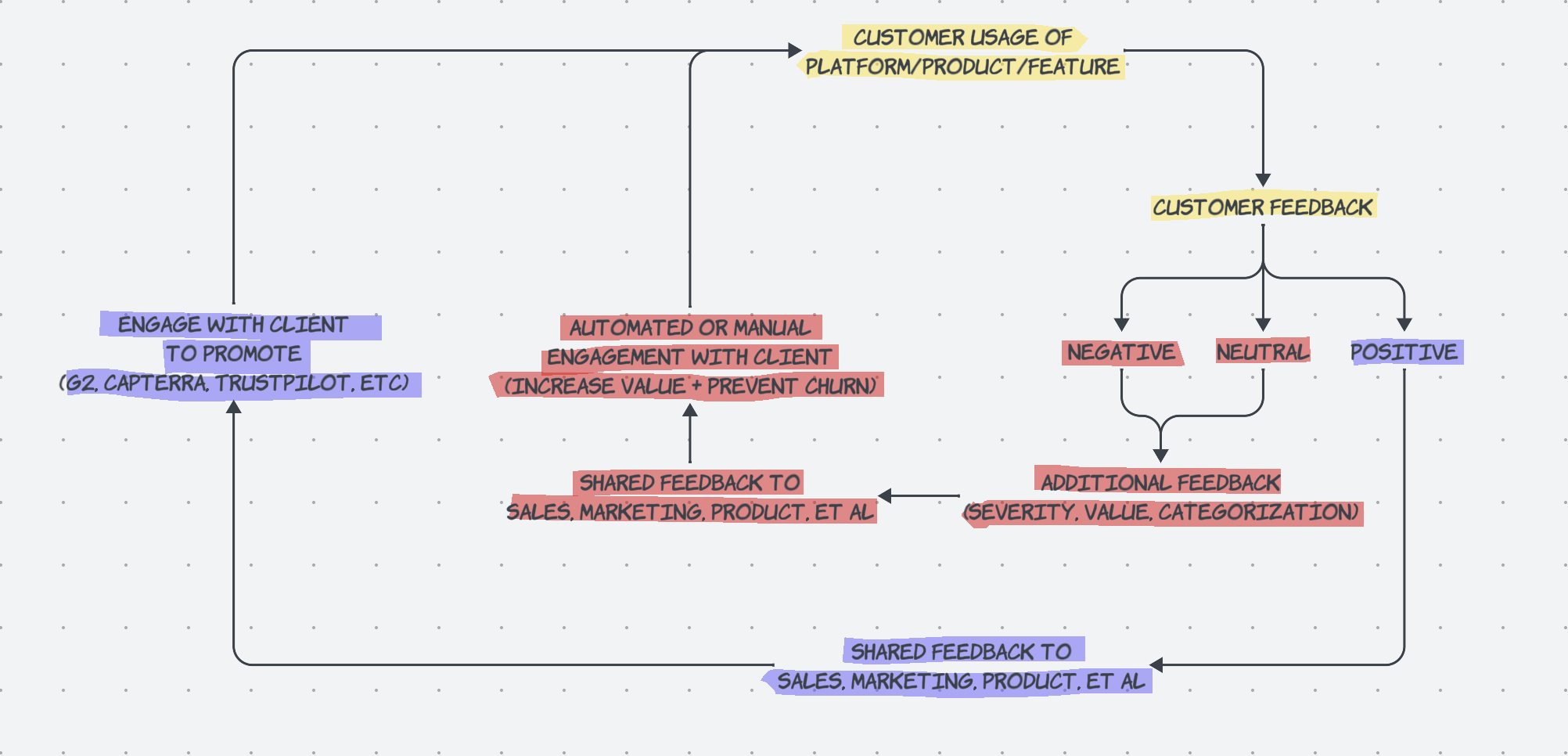Customer Advocacy: The Sales Team You’re Already Paying For
In the current competitive business environment, customer advocacy has emerged as a critical strategy for reducing churn and driving sales. This article explores how companies can establish a successful customer advocacy program to identify clients at risk of leaving, and harness the power of satisfied customers to attract more like-minded clients.
The Power of Customer Advocacy
Customer advocacy signifies the active prioritization of customer needs within a business. It's a strategy that propels satisfied customers to actively endorse your company and its offerings, which can be incredibly effective given that over 75% of B2B buyers consult a minimum of three advocacy sources before making a purchase decision.
In contrast to a company-centric or product-centric approach, customer advocacy adopts a "customer-first" mentality. It seeks innovative ways to enhance customer experience and satisfaction, whether it's through rapid resolution of support tickets or recommending a plan that best suits the customer's needs, even if it yields a lower profit.
The Value of Customer Advocacy
Customer advocacy plays a pivotal role in today's business landscape where customers are more informed and empowered than ever before. With numerous brands vying for attention, it's the customer who ultimately holds the power.
By focusing on your customers' needs, they are more likely to remain loyal and promote your brand to others. Furthermore, it ensures that all your future initiatives, whether it's a new product launch, service offering, or marketing campaign, align with customer demands.
The Art and Science of Customer Advocacy
Building a successful customer advocacy program requires a blend of art and science. The "art" involves fostering strong relationships with customers, delivering exceptional experiences, and creating a sense of community around your brand. The "science" entails collecting and analyzing customer data, identifying potential advocates, and measuring the effectiveness of your advocacy efforts.
Understanding Advocate Motivations
Understanding why customers become advocates is crucial for building a successful advocacy program. Advocates often fall into four categories9:
Educators: These customers are knowledgeable about your products/services and enjoy helping others.
Validators: These customers are credible and fair in their evaluations.
Status Seekers: These customers are ambitious and influential, often with extensive networks.
Collaborators: These customers enjoy being part of an exclusive network and are willing to invest time and energy in your brand.
Understanding these motivations can help you tailor your advocacy program to appeal to different types of advocates.
Identifying Potential Customer Advocates
Identifying potential advocates is a critical step in your customer advocacy strategy. An ideal advocate profile can serve as a benchmark for future customer advocates. By examining factors such as customer demographics, transaction history, and net promoter scores (NPS), you can identify the type of customers you want to recruit as advocates.
Engaging Customers Actively
Active customer engagement is crucial for fostering advocacy. When customers ask questions, respond in a timely manner. If they share about your product on their platforms, express gratitude. Regularly track and measure customer satisfaction levels to identify areas of improvement and opportunities to delight your customers.
Building an Online Customer Community
Creating an online community is a powerful way to foster customer advocacy. Here, customers can share their experiences, gain knowledge from peers, and feel a deeper connection with your brand. These communities can be hosted on existing social media platforms or custom-built using online community software.
The Role of Customer Advocates in Your Organization
Customer advocates are the champions of your customer needs within the company. They gather customer data, answer queries, collect feedback, and spearhead initiatives to improve the customer experience. These advocates are your customers' voice within the company and play a crucial role in executing your customer advocacy strategy.
Creating a Customer Experience to Remember
Great customer experiences go beyond monetary transactions. They're about creating a connection with the customer and evoking positive emotions. By offering unique and delightful experiences, you can turn satisfied customers into loyal advocates who will readily promote your brand to others.
Leveraging Customer Advocacy to Reduce Churn and Increase Sales
A well-planned customer advocacy program can help identify customers who are at risk of leaving, allowing you to take preventive measures to retain them. Simultaneously, it leverages the power of satisfied customers to attract new clients, thereby boosting sales.
Customer advocates can serve as a company's best marketers. They can provide success stories, product and service reviews, or quotes in marketing collateral. They can also spread the word about your brand on social media, which can significantly impact sales.
Categorizing Your Customers
To further refine your customer advocacy program, it's beneficial to categorize your customers into client profiles. This can be broken down by client size, client revenue, industry, use case, and feature sets. Doing so allows you to tailor your program to different types of customers, maximizing its effectiveness.
Measuring the Success of Your Customer Advocacy Program
To gauge the success of your customer advocacy efforts, it's essential to set clear goals. Whether you're aiming to increase the number of positive reviews, attract more referrals, or achieve higher NPS scores, having measurable objectives will enable you to track the progress and effectiveness of your advocacy program.
In conclusion, customer advocacy is a powerful strategy that helps businesses reduce customer churn and drive sales. By putting customers first, building meaningful relationships, and offering delightful experiences, you can turn your satisfied customers into loyal advocates who can significantly contribute to your brand's growth and success.
Tools for Customer Advocacy
Several tools can aid in building and managing a customer advocacy program. These include advocate encouragement tools like Influitive and CrowdVocate, gifting initiatives like Printfection and Loop and Tie, and advocate review sites like G2 Crowd, TrustRadius and Capterra.
The Future of Customer Advocacy
The future of customer advocacy lies in personalization. With the advent of AI and machine learning, businesses can now provide personalized experiences to their customers at scale. This can lead to higher customer satisfaction, loyalty, and ultimately, advocacy.
A well-implemented customer advocacy program can be a game-changer for your business. It can help reduce churn, grow sales, and create a community of loyal customers who actively promote your brand. By understanding your customers, their motivations, and their needs, you can build a customer advocacy program that drives business growth.

